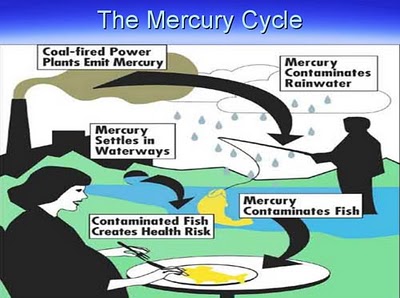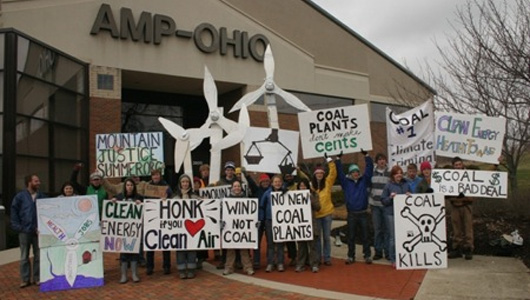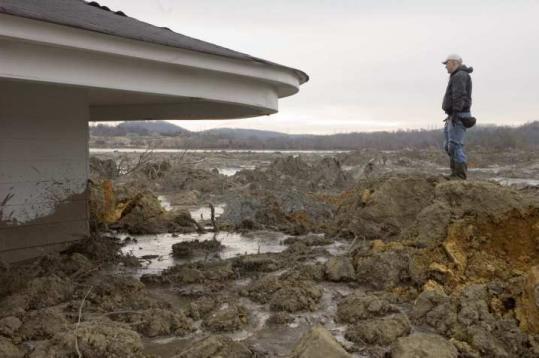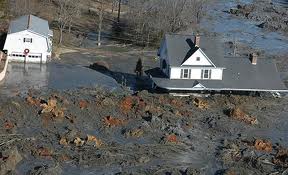By Elizabeth Weise, USA TODAY 12/21/2011

The Environmental Protection Agency released far-reaching air pollution regulations Wednesday, 21 years after they were first mandated by Congress and six days after they were signed by the agency.
The rules require coal- and oil-fired power plants to lower emissions of 84 different toxic chemicals to levels no higher than those emitted by the cleanest 12% of plants. Companies have three years to achieve the standards, and EPA has made clear a fourth year and perhaps even more time are also available to them.
“We’re delighted,” says Janice Nolen of the American Lung Association. “After waiting 21 years, it looks like we may actually have a rule that will help to save 11,000 lives a year and reduce exposure all across the country to a bunch of really toxic substances.”

“It’s hard to overstate the significance of this rule,” says John Walke of the Natural Resources Defense Council, an environmental group. “This is a generational achievement that marks America cleaning up dirty power plants once and for all.”
The EPA rules govern multiple toxic substances, including mercury, arsenic, nickel, selenium and cyanide.
Power plants are responsible for half of the mercury and more than 75% of the acid gas emissions in the United States, the EPA says. The EPA estimates that about half the nation’s power plants already have pollution control technologies in place. This rule will “level the playing field” in the agency’s words, by ensuring that the rest, about 40% of all coal-fired plants, take similar steps.
Coal mining and power companies, their lobbyists, and even the U.S. government want you to believe that it’s safe for everyone, including pregnant women and children, to eat fish contaminated with mercury. The truth is that mercury is a potent neurotoxin. All 50 states have issued mercury fish advisories, and the EPA reports 1 in 6 babies are born each year with unsafe levels of mercury in their bodies, causing brain damage, low IQ and developmental disorders.
U.S coal-fired power plants spew 48 tons of mercury into the air every year. The mercury eventually falls into our rivers, lakes and oceans, and nearly all fish and shellfish in the U.S. contain mercury. Mercury from coal-fired power plants is not only poisoning our food supply, but our children as well. Pregnant women who eat mercury-contaminated fish pass the mercury onto their babies in utero and through breast milk. High levels of exposure can irrevocably effect neurological development, leading to developmental delays and learning disabilities, including impairments in cognitive thinking, memory, attention, language usage and fine-motor and visual-spatial skills. Despite all of this, the FDA still does not require the labeling of mercury-contaminated fish.
We are forced to decide between the dietary benefits of eating fish and the risk of neurological damage to ourselves and our children from eating mercury-contaminated fish. The truth is you can meet your nutritional needs without fish, but you’ll never be able to get back your baby’s lost IQ points if you make the wrong choice.
http://theDirtyLie.com/

By EPA estimates, the rules will prevent as many as 11,000 premature deaths and 4,700 heart attacks a year, as well as preventing 130,000 cases of childhood asthma symptoms.
Coal-fired burners are the main focus of the regulation, as oil-fired burners are less popular, given high oil prices. There are about 1,100 coal-fired burners being used at 600 power plants nationwide, EPA Administrator Lisa Jackson told USA TODAY. Currently, 12% of the nation’s coal-fired power plants already meet the standards, by definition. Another 48% have some if not all of the necessary technologies in place to meet the standards.
The remaining 40% “have done nothing, they have no controls, they emit unlimited amounts of pollutants, they have no technology in place,” Jackson says.
But the industry argues that the cost of meeting these rules could bring economic hardship.
American Coalition for Clean Coal Electricity President and CEO Steve Miller said Wednesday that EPA “is out of touch with the hard reality facing American families and businesses. This latest rule will destroy jobs, raise the cost of energy and could even make electricity less reliable.”
EPA estimates that the cost of compliance will run approximately $9.6 billion per year. But the agency also estimates the yearly benefits will be between $37 billion and $90 billion, mostly due to fewer people falling ill and dying from pollution. The agency says “employment impacts associated with the final rule are estimated to be small,” but utilities disagree.
An analysis done for the American Coalition for Clean Coal Electricity said Wednesday’s rule, combined with other pending EPA regulations, could cost an average of 183,000 jobs every year from 2012- 2020.
Lance Brown, executive director of the Partnership for Affordable Clean Energy, an industry group, says “numerous studies have shown it will result in the loss of more than one million jobs in the next decade.”
In terms of plant closures, an Associated Press analysis, which the coalition found to be credible, estimated that of the nation’s 600 coal-fired power plants, more than 32 would likely close because they would not be cost-effective to run under the new rules. AP also found that another 36 might close.
There was a furious eleventh-hour push by some utility groups in the past two weeks “to try to kill this, but in the end too many pieces of the power industry were saying, ‘We can do this,’ ” says Jim Pew of Earthjustice, a public interest law group.
Advertisements suggesting that the United States will experience power blackouts because of the new rules “are greatly overblown,” EPA’s Jackson says. Modeling done by EPA, Congress and the Department of Energy all suggest there’s no danger of that.
“This is just a scare tactic,” she says. Utilities are crassly “asking Americans to choose between mercury in their and their children’s bodies, and power.” That’s not what’s happening, Jackson says.
There’s nothing in the rule requiring these plants to be shut down, only that they need to be cleaned up, she says. Analysis has shown that these plants are, on average, 50 years old.
“It’s just like your car. You have to make a determination of how much you want to put into a clunker when it starts to see the end of its useful life. Companies will have to make business decisions,” Jackson says.
October 15, 2010 by Ken Ward Jr.
“This week, a report from the EPA’s own Inspector General has some criticism of the agency’s actions regarding a Web site promoting “beneficial uses”:
EPA’s C2P2 Website presented an incomplete picture regarding actual damage and potential risks that can result from large-scale placement of CCRs. In its May 2010 proposed rule, EPA showed that environmental risks and damage can be associated with the large-scale placement of unencapsulated CCRs. According to EPA’s proposed rule, unencapsulated use of CCRs may result in environmental contamination, such as leaching of heavy metals into drinking water sources. The proposed rule identified seven cases involving large-scale placement, under the guise of beneficial use, of unencapsulated CCRs, in which damage to human health or the environment had been demonstrated.
Giant Toxic Coal Ash Spill causes “tremendous human health threats”
Kelly Hearn in Kingston, Tennessee for National Geographic News | January 23, 2009

It’s been called the Exxon Valdez of coal ash – a wakeup call for a fossil fuel industry. But the recent toxic ash spill in Tennessee is greater in scope than the 1989 oil spill, and despite what some conservationists are calling very real threats, the ash disaster has so far inspired apparently little concern for local wildlife.
On December 22 a billion gallons of poisonous sludge-largely coal ash, a byproduct of coal burning-broke through an earthen dike at the Kingston Fossil Plant. The torrent half-buried area homes and elevated long-running health concerns over heavy metals in the ash.
Those worries, experts say, are not limited to human health. In addition to the animals killed by the initial spill, wildlife may be threatened for years by the trace amounts of arsenic, cadmium, mercury, thallium, and other toxins in the coal ash.
“We’re concerned about tremendous human health threats but also serious biological threats to animal species,” said Stephen Smith, veterinarian and director of the Southern Alliance for Clean Energy.
“Already mussels, snails, and aquatic species are in grave danger, but no one seems to be talking about it.”
Other local animals that could be affected include river otters, mink, muskrat, ospreys, and black-crowned night herons, according to the Tennessee Wildlife Resources Agency.
Coal ash dumps a ‘time bomb’ for Michigan water
By Eartha Jane Melzer | 01.16.09

The dangers associated with waste from coal-fired power plants got some attention last month when a billion gallons of coal ash spilled from a storage pond in Tennessee, contaminating surface waters with arsenic, mercury and lead. Michigan has plenty of its own problems stemming from coal ash contamination, regulators and environmentalists say, but because the ash is stored underground the problems have largely gone unnoticed.

Stored in unsecured landfills, coal ash can leach toxins into groundwater, endangering the ecosystem of the Great Lakes, which contains 20 percent of the world’s fresh water.
The North Lansing Landfill, operated by the Lansing Board of Water and Light (BWL), is among 24 coal ash dumps identified in a 2007 U.S. Environmental Protection Agency report as sites of “proven damage” to groundwater.





